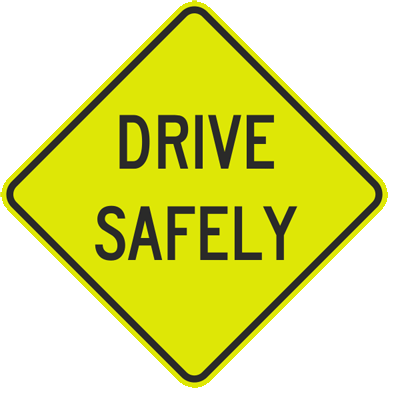The number of people dying in traffic accidents in Australia has been falling steadily since 1970,
however while deaths are down, serious road crash injures are up.
You can help protect yourself with pro-active driving. This is simply, driving with greater focus,
recognising problems before they occur, and having solutions ready for when they do.
Some of the skills can be learned through training and years of driving experience.
But other tips you can start using straight away. Here are some of them.
Aim high in steering.
Steer to the conditions in the distance, rather than what's directly in front of you.
In the city that's about a block or two away, while out in the country it's roughly half a kilometre.
Use the two-second rule.
Stay at least two seconds behind the car in front. Pick a fixed object beside the road. When the back of the vehicle in front of you passes it, start counting slowly as, one thousand two thousand. When you have finished saying the "second" thousand, the front of your vehicle should be passing the object you chose to monitor. As your speed increases, this method has a way of automatically adjusting the distance between your vehicle, and the one directly in front of you. When bad weather, or hazardous conditions, present themselves, then give yourself more distance.
Don't brake during cornering. (unless of course, you are faced with a hazard)
Slow down and be at the correct speed "before" you get to the corner, intersection, or roundabout, that you wish to enter into. Generally the comfortable, and safe speed for most vehicles is approx 25Km/hr for
standard sized intersections, roundabouts, and corners. Adjust your speed accordingly to safely accomodate smaller or larger turns.
Intersections are dangerous.
Don't assume other drivers will give way, even when they should.
Better to be the safe driver and be cautious, than assume and have an accident.
Change your thinking.
Pro-active driving is partly an attitude. Stay alert but remain calm. Don't respond to aggressive drivers,
even if you have right of way. Stay in your lane and minimise lane changes. Learn to spot drivers who are erratic, and stay away from them.
Be aware.
Keep checking your mirrors and maintain a 'big-picture' awareness of everything around you.
Don't fixate on one thing. Train yourself to spot potential problems before they occur.
however while deaths are down, serious road crash injures are up.
You can help protect yourself with pro-active driving. This is simply, driving with greater focus,
recognising problems before they occur, and having solutions ready for when they do.
Some of the skills can be learned through training and years of driving experience.
But other tips you can start using straight away. Here are some of them.
Aim high in steering.
Steer to the conditions in the distance, rather than what's directly in front of you.
In the city that's about a block or two away, while out in the country it's roughly half a kilometre.
Use the two-second rule.
Stay at least two seconds behind the car in front. Pick a fixed object beside the road. When the back of the vehicle in front of you passes it, start counting slowly as, one thousand two thousand. When you have finished saying the "second" thousand, the front of your vehicle should be passing the object you chose to monitor. As your speed increases, this method has a way of automatically adjusting the distance between your vehicle, and the one directly in front of you. When bad weather, or hazardous conditions, present themselves, then give yourself more distance.
Don't brake during cornering. (unless of course, you are faced with a hazard)
Slow down and be at the correct speed "before" you get to the corner, intersection, or roundabout, that you wish to enter into. Generally the comfortable, and safe speed for most vehicles is approx 25Km/hr for
standard sized intersections, roundabouts, and corners. Adjust your speed accordingly to safely accomodate smaller or larger turns.
Intersections are dangerous.
Don't assume other drivers will give way, even when they should.
Better to be the safe driver and be cautious, than assume and have an accident.
Change your thinking.
Pro-active driving is partly an attitude. Stay alert but remain calm. Don't respond to aggressive drivers,
even if you have right of way. Stay in your lane and minimise lane changes. Learn to spot drivers who are erratic, and stay away from them.
Be aware.
Keep checking your mirrors and maintain a 'big-picture' awareness of everything around you.
Don't fixate on one thing. Train yourself to spot potential problems before they occur.
Here are some simple steps you can take to stay safer on the road


